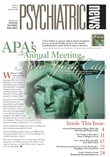Back in 1905, a journalist wrote that New York City’s Central Park was teeming with thousands of horse-drawn carriages. There was “the banker seeking recreation in his spider phaeton. . .the tandem lending its bit of smartness to the show.” Sometimes harnessed horses were so spirited that they ran away, and the park’s mounted police had to chase after them and bring them under control.
It is now a century later, and Central Park is no longer bustling with horses, phaetons, runabouts, and tandems. Nonetheless, each year the park still lures not just New Yorkers but millions of visitors from throughout the world with numerous attractions. Here are some you might consider, starting from the southernmost end of the park, at 59th Street, and moving north.
• Horse-drawn buggy rides: True, New Yorkers no longer drive their own horse-drawn vehicles through Central Park, but taking a chauffeured horse-and-buggy ride is still an option. The carriages for rent can be found along 59th Street between Fifth and Sixth avenues, across from the Plaza Hotel.
• Wollman Rink: Located in the southeastern part of the park, between 62nd and 63rd streets, the Wollman Rink offers ice skating between November and March and a lovely view of the Manhattan skyline anytime.
• Central Park Zoo: This wildlife oasis at 64th Street and Fifth Avenue features tropical, temperate, and polar habitats; more than 1,400 animals (130 species) call it home. The Leaping Frog Café serves snacks and provides outdoor seating during the warmer months.
• Central Park Carousel: The first carousel in Central Park was built during the 1870s and was powered by animals. A steam-powered carousel arrived around 1900. The present carousel, at 64th Street in the middle of the park, is the fourth one. The carousel, one of the largest in the United States, was built in 1951 and carries 58 hand-carved steeds.
• Visitor Center: The park’s Visitor Center is housed in a 19th-century Swiss chalet called “the Dairy” and can be found at 65th Street. Here, you can ask questions, pick up park information, and purchase a good park map. The center also sports a youngster-friendly exhibition about the park’s history. Central Park, incidentally, was designed by Frederick Law Olmsted, a well-known designer of asylum grounds during the 19th century, and was built between 1857 and 1863.
• Sheep Meadow: The Sheep Meadow is located in the southwestern area of the park from 66th to 69th streets. Until 1934, it was just what its name implies—a meadow for a flock of sheep. Today, it is a favorite spot for picnickers, kite flyers, sunbathers, families, and visitors who come to admire the New York City skyline.
• Tavern on the Green: Located at West 67th Street and Central Park West, across from the Sheep Meadow, Tavern on the Green has long been a popular restaurant with New Yorkers and visitors alike. It consists of six rooms decorated with crystal and mirrors, boasts a lovely garden, and serves contemporary American and seasonal fare. There is no dress code; prices are moderate to moderately expensive.
• Strawberry Fields: The Dakota apartment building, located on the northwest corner of 72nd Street and Central Park West, was the place that Beatle John Lennon called home for the latter part of his life. One night in December 1980, he was murdered outside the building as he returned home from a recording session. Strawberry Fields is a gorgeous garden dedicated to Lennon’s memory. It is located directly across from the Dakota building in Central Park. The focus of the garden is an Italian mosaic bearing the title of Lennon’s most famous solo song and his lifelong message: Imagine.
More information about Central Park is available by calling (212) 360-3444 for recorded information, (888) NYPARKS for special events information, and (212) 310-6600 to speak to an operator. The park also has a Web site: www.centralparknyc.org ▪

